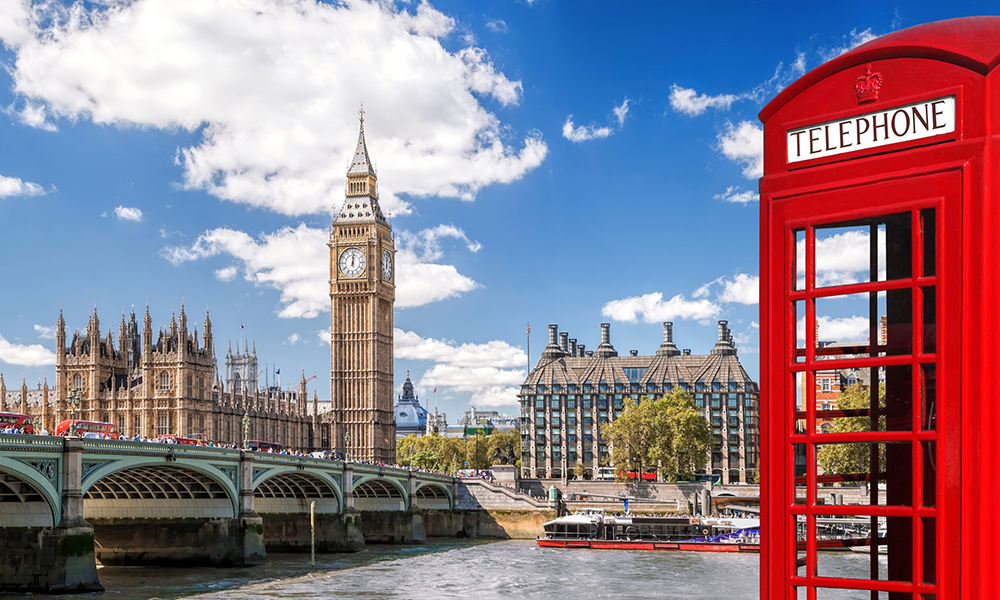
在英国大选中,工党大获全胜。新一届工党政府承诺要带领英国重回经济巅峰。工人薪酬增长的最新证据,将为他们提供一个良好的平台,以实现这个承诺。
Indeed Hiring Lab的数据显示,从年初至6月,英国的工资涨幅为7%。这是欧元区工资涨幅(3.7%)的近两倍,是美国(3.1%)的两倍以上。
这个结果与三个经济体更广泛的经济背景存在偏差。根据国际货币基金组织(IMF)的最新预测,今年英国的经济增长速度应低于欧元区和美国。
一种解释是,英国“国家生活工资”更大幅度的上涨。所谓“国家生活工资”是指雇主必须向21岁以上的员工支付的法定最低工资。
英国政府的职责是根据咨询机构低薪委员会(Low Pay Commission)的建议,将国家生活工资维持在英国中位数工资三分之二的水平。这项政策的目标是帮助避免工人陷入相对贫困。
与通货膨胀和私营部门工资增长保持同步,意味着4月英国的国家生活工资上涨9.8%,这是该政策自2016年推出以来的最大涨幅。16至20岁工人的国家最低工资涨幅更大。
托尼·布莱尔的工党政府在1999年推出了国家最低工资,至今已经上涨了70%。与此同时,中位数工资同期仅上涨了约20%,这表明英国的工资不平等现象有所减少。
低薪委员会估计,去年4月,英国约160万人的工资等于或低于最低工资水平,因此提高基本工资可能对工资上涨产生了巨大影响。
Indeed表示,去年,国家生活工资使英国工资快速上涨,但这并不是全部原因。
Indeed Hiring Lab的欧洲、中东和非洲地区研究总监鲍威尔·阿德里安表示:“所有薪酬范围的工资大幅上涨意味着英国国家生活工资在4月1日上涨9.8%,并不是工资上涨的唯一推动因素,但它与特定行业的劳动力需求一起,确实对低工资群体产生了持久影响。”
“随着工党计划取消英国全国最低工资结构中的年龄段划分,低薪职业甚至可能迎来工资再次上涨。”
工党表示,它还将允许低薪委员会的职权范围扩大到包括生活成本,为将来更大幅度地提高全国生活工资铺平道路。
让人头疼的通货膨胀
虽然工人们会为工资上涨而欢呼雀跃,但对于希望降息的政策制定者来说,这可能是令人头疼的最新问题。
英格兰银行(Bank of England)近一年来一直将基准利率固定在 5.25%,以应对不断上涨的物价。
5 月份,消费物价指数(CPI)达到了英国央行 2% 的目标。但央行预计第三季度通胀将再次飙升,这迫使他们暂缓降息。
与此同时,英国已经落后于欧元区,欧洲中央银行(European Central Bank,ECB)在6月份成为首个降息的主要央行。
英国工资大幅上涨的任何蛛丝马迹,都可能让英格兰银行的利率制定者们收敛在利率方面本就已经谨慎的雄心。(财富中文网)
译者:刘进龙
审校:汪皓
在英国大选中,工党大获全胜。新一届工党政府承诺要带领英国重回经济巅峰。工人薪酬增长的最新证据,将为他们提供一个良好的平台,以实现这个承诺。
Indeed Hiring Lab的数据显示,从年初至6月,英国的工资涨幅为7%。这是欧元区工资涨幅(3.7%)的近两倍,是美国(3.1%)的两倍以上。
这个结果与三个经济体更广泛的经济背景存在偏差。根据国际货币基金组织(IMF)的最新预测,今年英国的经济增长速度应低于欧元区和美国。
一种解释是,英国“国家生活工资”更大幅度的上涨。所谓“国家生活工资”是指雇主必须向21岁以上的员工支付的法定最低工资。
英国政府的职责是根据咨询机构低薪委员会(Low Pay Commission)的建议,将国家生活工资维持在英国中位数工资三分之二的水平。这项政策的目标是帮助避免工人陷入相对贫困。
与通货膨胀和私营部门工资增长保持同步,意味着4月英国的国家生活工资上涨9.8%,这是该政策自2016年推出以来的最大涨幅。16至20岁工人的国家最低工资涨幅更大。
托尼·布莱尔的工党政府在1999年推出了国家最低工资,至今已经上涨了70%。与此同时,中位数工资同期仅上涨了约20%,这表明英国的工资不平等现象有所减少。
低薪委员会估计,去年4月,英国约160万人的工资等于或低于最低工资水平,因此提高基本工资可能对工资上涨产生了巨大影响。
Indeed表示,去年,国家生活工资使英国工资快速上涨,但这并不是全部原因。
Indeed Hiring Lab的欧洲、中东和非洲地区研究总监鲍威尔·阿德里安表示:“所有薪酬范围的工资大幅上涨意味着英国国家生活工资在4月1日上涨9.8%,并不是工资上涨的唯一推动因素,但它与特定行业的劳动力需求一起,确实对低工资群体产生了持久影响。”
“随着工党计划取消英国全国最低工资结构中的年龄段划分,低薪职业甚至可能迎来工资再次上涨。”
工党表示,它还将允许低薪委员会的职权范围扩大到包括生活成本,为将来更大幅度地提高全国生活工资铺平道路。
让人头疼的通货膨胀
虽然工人们会为工资上涨而欢呼雀跃,但对于希望降息的政策制定者来说,这可能是令人头疼的最新问题。
英格兰银行(Bank of England)近一年来一直将基准利率固定在 5.25%,以应对不断上涨的物价。
5 月份,消费物价指数(CPI)达到了英国央行 2% 的目标。但央行预计第三季度通胀将再次飙升,这迫使他们暂缓降息。
与此同时,英国已经落后于欧元区,欧洲中央银行(European Central Bank,ECB)在6月份成为首个降息的主要央行。
英国工资大幅上涨的任何蛛丝马迹,都可能让英格兰银行的利率制定者们收敛在利率方面本就已经谨慎的雄心。(财富中文网)
译者:刘进龙
审校:汪皓
The U.K.’s new Labour government has emerged from its landslide election victory, promising to return the country to its economic heights. The latest evidence of worker pay growth will give them a good platform to deliver on that promise.
Wages rose by 7% in the U.K. in the year to June, according to data from the Indeed Hiring Lab. That’s almost twice the rate of the Eurozone, where wages increased by 3.7%, and more than double growth in the U.S., which rose at 3.1%.
The results diverge with the broader economic context of the three economies. The U.K. is expected to grow more slowly than the Eurozone and the U.S. this year, according to the latest IMF forecast.
One explanation is likely to be a bumper increase in the U.K.’s National Living Wage, the legal minimum employers must pay staff over 21.
The U.K. government’s remit is to keep the national living wage at two-thirds of the U.K. median wage, in line with recommendations from its advisory board, the Low Pay Commission. This target helps safeguard against workers falling into relative poverty.
Keeping up with inflation and private sector wage growth meant the National Living Wage increased by 9.8% in April, its third largest increase since it was introduced in 2016. The national minimum wage pay rise was even larger for 16 to 20-year-olds.
Tony Blair’s Labour government introduced the national minimum wage in 1999. The U.K. minimum has grown by 70% since then. The median wage, meanwhile, has only grown by about 20% in that period, suggesting a reduction in wage inequality in the U.K.
The Low Pay Commission estimated that around 1.6 million people were paid at or below the minimum wage in April last year, so increases in the base could have outsized effects on growth.
Indeed says the National Living Wage contributed to the U.K.’s fast wage growth last year, but it’s not the full explanation.
“Strong wage growth across all pay ranges suggests that the UK’s National Living Wage increase of 9.8% on April 1st isn’t the sole driver behind rising wage growth, but it is having a lasting impact on lower-paid salaries, alongside sector-specific labour demand,” said Pawel Adrjan, head of EMEA research at the Indeed Hiring Lab.
“With Labour planning to scrap age-specific bands in the UK’s national minimum wage structure, lower-paid occupations may yet receive another boost.”
Labour says it will also allow the Low PAy Commission’s remit to expand to include the cost of living, paving the way for even more significant increases to the National Living Wage in the future.
Inflation headache
While workers will cheer an increase in their paycheck, it could be the latest headscratcher for policymakers who are keen to cut interest rates.
The Bank of England has kept its base rate fixed at 5.25% for almost a year to fight rising prices.
The consumer prices index (CPI) hit the bank’s target of 2% in May. However, the central bank expects inflation to jump again in the third quarter, causing them to hold off on cutting rates.
In the meantime, the country is losing pace against the Eurozone, where the European Central Bank (ECB) became the first major central bank to cut interest rates in June.
Any hint of hot wage growth in the U.K. might make the Bank of England’s rate-setters rein in their already cautious ambitions on interest rates.






